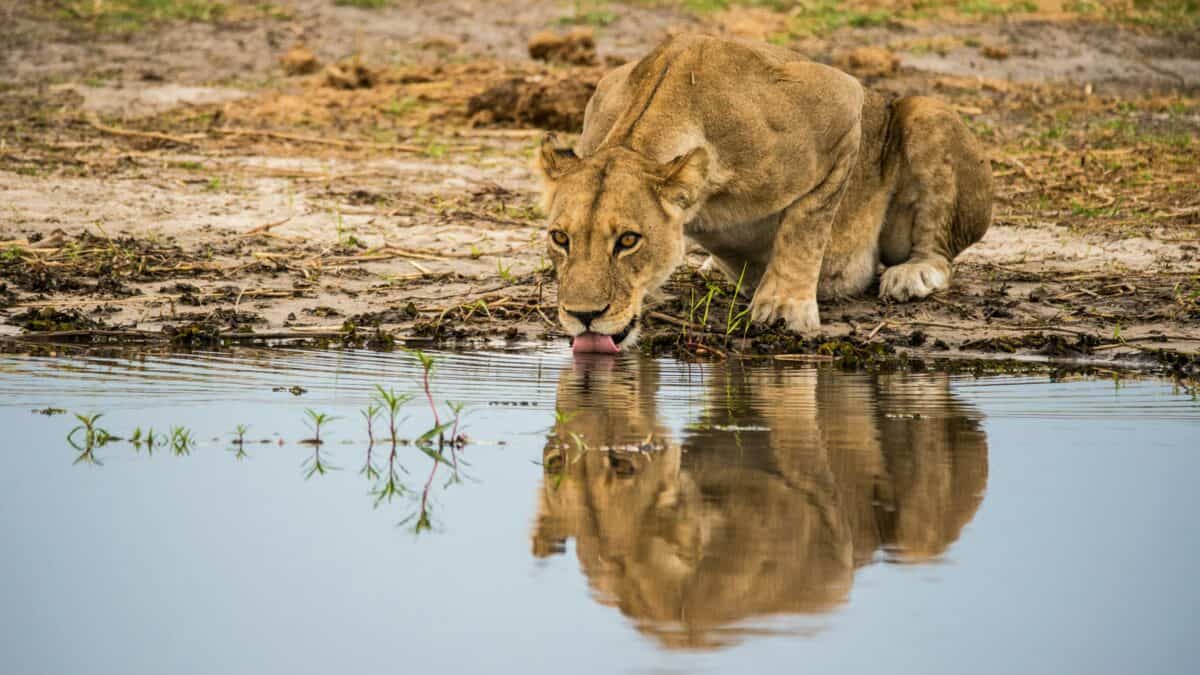Thrilling footage was captured at a watering hole in the Manyoni Game Reserve, South Africa. A buck, likely a nyala, used clever tactics to outsmart a lioness.
Introduction

Everyone has to eat, and when an opportunity for a large meal presented itself at a watering hole, a lioness jumped at it, literally.
Not So Fast

The prey – an antelope that appears to be a nyala, was not ready to become a lion’s lunch. Under strong pursuit, the nyala led the race, but the lioness was gaining on him.
Cats Hate Water, Right?

In a move that could only be described as “big-brained,” the nyala bounded into the watering hole, evading the lioness. Cats notoriously don’t like water, so the nyala was almost safe – almost.
Danger From All Sides

The nyala barely had a chance to catch his breath after his daring escape, when a crocodile presented itself. The croc seized its opportunity and snapped at the nyala’s leg. The nyala had a choice to make – crocodile or lion.
Fight or Flight

Cleverly, the nyala realized his chances were better on land. But he was once again face-to-face with his initial opponent. As if suddenly remembering he had sharp, pointy horns atop his head, he leaned his neck forward and charged.
Life Begins Where Fear Ends

The nyala’s aggression seems to have worked in chasing the lioness away. I wonder if he decided to take on the crocodile next.
A Speed Race

Nyalas can reach speeds of 30 mph (48 km/h) when evading capture. Lions are significantly faster, reaching top speeds of 35–50 mph (56–80 km/h). However, neither animal can sustain such a pace for a prolonged period. For a nyala to successfully escape capture, they need to use dodging tactics, or be faster than someone else in their herd. For a lion to be successful, they need to stalk and surprise their prey.
About Nyalas

Nyalas (Tragelaphus angasii) are native to southeastern Africa. They are typically shy and elusive, and live in small, non-territorial groups.
Further, they have a key role in seed dispersal throughout their range leaving seeds behind in their droppings.
About African Lions

African lions (Panthera leo) are found in sub-Saharan Africa among savannas, grasslands, and open woodlands. They are the largest of the African big cats, and live in large social groups, or “prides.”
As apex predators, African lions play a crucial role in maintaining the balance of their ecosystems by controlling herbivore populations and preventing overgrazing. Unfortunately, lions are currently classified as “vulnerable” by the IUCN.
Conclusion

Thanks for reading! You may also like:
- Did You Know Jaguars Hunt Sea Turtles in Costa Rica?
- Helicopter Catches Elephant Right Before Poachers
Join our Forum for free today!

- Baby Elephant Finally Free From Life in Chains! - June 22, 2024
- Nyala Outsmarts Lioness in Epic Move - June 20, 2024
- Big Cats Like Calvin Klein Perfume - June 12, 2024
